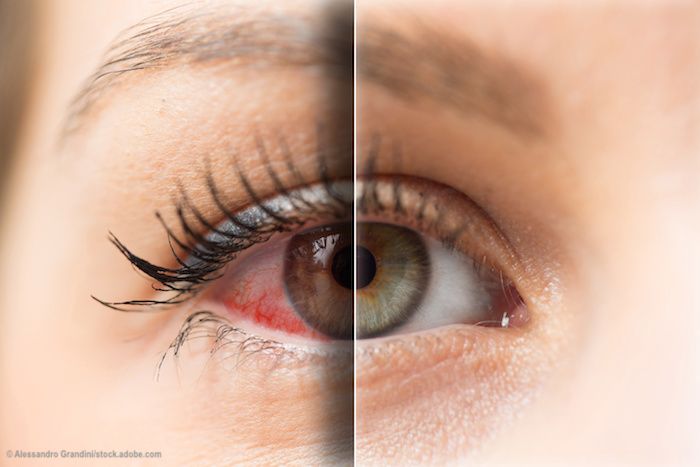Novel drugs + delivery systems ease ocular pain and inflammation
Novel therapeutic approaches and drug-delivery technologies are improving control of pain and inflammation after cataract and other ocular surgeries.

Novel therapeutic approaches and drug-delivery technologies are improving control of pain and inflammation after cataract and other ocular surgeries.
More from the november issue: New drop for neurotrophic keratitis uses human nerve growth factor
Physicians hear from well-intentioned patients all the time about their efforts to instill medications into their eyes perioperatively.
The scenarios can vary from instilling too many or too few drops of the correct medications into the eye, forgetting to administer their drops at all, instilling the wrong drugs into the right place, or missing the mark altogether.
In any case, the end result is the same: the prescribed drugs are not going where they are intended to go and the desired therapeutic effect-that is, alleviation of pain and inflammation-does not happen.
A number of new advances in drug delivery have been introduced over the past 1 to 2 years that are helping patients who have undergone cataract surgery and who are having trouble instilling drugs more easily reap the benefits of their prescribed medications, according to Alice Epitropoulos, MD.
The real advantage is that the novel technologies facilitate compliance and overall patient care, said Dr. Epitropoulos, clinical assistant professor, The Ohio State University Wexner Medical Center and private practice, Columbus, OH.
Dr. Epitropoulos expressed her appreciation of the availability of these formulations in her drug armamentarium “because they will elevate the level of patient care by alleviating the age-old problems associated with compliance,” she said.
More from the november issue: Know the hidden links among glaucoma, contact lenses, and the cornea
Novel steroids
Two new novel steroids, one insert and one injection, are commercially available to better customize postoperative treatment after cataract and other ocular surgeries.
“These new drug-delivery systems are a major step forward and will both help reduce ocular toxicity and improve patient compliance,” Dr. Epitropoulos said.
A dexamethasone ophthalmic intracanalicular insert, 0.4 mg (Dextenza, Ocular Therapeutix, Inc.) was approved in 2018. This device, which is inserted into the punctum after ophthalmic surgery to treat pain and inflammation, is used instead of topical corticosteroid drops during the postoperative period. The insert delivers a sustained release of dexamethasone over a 30-day period.
Dr. Epitropoulos pointed out that in addition to lessening the treatment burden, it also is preservative free, and prevents exacerbation of ocular surface disease via occlusion of the punctum. It is the only FDA-approved preservative-free steroid on the market today, she said.
Another form of dexamethasone was introduced, in early 2018, i.e., the dexamethasone intraocular suspension 9% (Dexycu, EyePoint Pharmaceuticals Inc.). This treatment, Dr. Epitropoulos noted, is the only FDA-approved sustained-release intracameral injection intended to treat inflammation after ocular surgery. The effect of one injection lasts for 30 days.
More from the november issue: Offer IPL as a treatment for MGD and dry eye disease
Steroid drops and gel
Other steroid treatments have been engineered to be a step above standard drop therapy with enhanced penetration, which can improve efficacy and help prevent ocular surface disease from corneal toxicity.
The first, loteprednol etabonate ophthalmic suspension 1% (Inveltys, Kala Pharmaceuticals), makes use of nanoparticle technology to provide better penetration into the eye following ocular surgeries. The FDA approved this formulation for use after ocular surgery in 2018. The drug achieves improved intraocular penetration as the result of nanoparticle sized particles that range from 200 to 400 nanomolars.
Dr. Epitropoulos explained that when dosed twice daily, the drug is designed to efficiently penetrate through the mucus barrier on the ocular surface and into the target tissue of the cornea and anterior chamber.
Another novel steroid, loteprednol etabonate ophthalmic gel 0.38% (Lotemax SM, Bausch + Lomb), received FDA approval in early 2019. This formulation provides two times greater penetration to the aqueous humor as a result of its submicron particle size. The particles are 80% smaller than those in the Lotemax gel formulation, which allows for more efficient penetration into the target tissues, Dr. Epitropoulos explained.
Lastly, fluorometholone acetate ophthalmic suspension 0.1% (Flarex, Eyevance Pharmaceuticals LLC) is being reinvigorated after having been acquired recently by Eyevance Pharmaceuticals.
“This topical steroid has the broadest indication of any current branded steroid. It is indicated for conditions of the bulbar and palpebral conjunctiva, the cornea, and anterior segment of the eye with a low incidence of increase in the intraocular pressure. It can be used for induction treatment for dry eye disease or other ocular surface inflammatory conditions, corneal procedures such as LASIK, PRK, keratectomy, corneal-crosslinking, Descemet stripping endothelial keratoplasty, Descemet’s membrane endothelial keratoplasty, and pterygium removal,” she pointed out.
Preventing floppy iris syndrome
Phenylephrine and ketorolac intraocular solution 1%/0.3% (Omidria, Omeros) was FDA approved in 2014 and is indicated for maintaining pupil size and preventing intraoperative miosis during cataract surgery and reducing postoperative ocular pain.
This drug added to the irrigating solution during cataract surgery is particularly beneficial in patients who may have used alpha-blockers such as tamsulosin hydrochloride (Flomax, Sanofi) or other alpha blockers and are at possible risk of iris prolapse or billowing, also known as intraoperative floppy iris syndrome.
“Both Dextenza and Dexycu now have a permanent reimbursement J code,” she said.
More from the November issue: Minimize symptoms of dry eye disease in refractive surgery patients
References:
Alice Epitropoulos, MD
E: eyesmd33@gmail.com
Dr. Epitropoulos is a speaker and/or consultant for Bausch + Lomb, EyePoint Pharmaceuticals, Kala Pharmaceuticals, Ocular Therapeutix, and Omeros.
Newsletter
Want more insights like this? Subscribe to Optometry Times and get clinical pearls and practice tips delivered straight to your inbox.





.png&w=3840&q=75)











